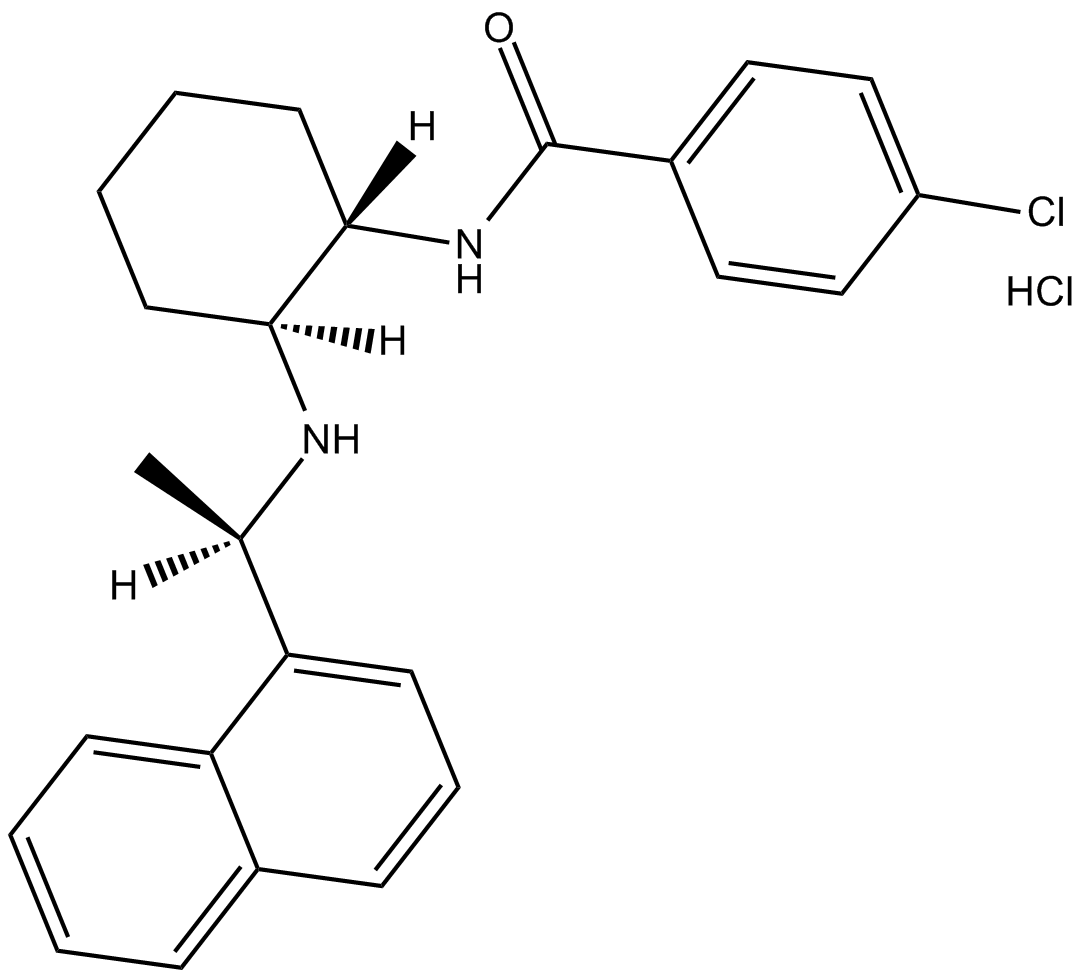Calhex 231 hydrochloride |
| Katalog-Nr.GC17697 |
Calhex 231 Hydrochlorid ist ein CaSR-Inhibitor Über negative allosterische Modulation.
Products are for research use only. Not for human use. We do not sell to patients.

Cas No.: 652973-93-8
Sample solution is provided at 25 µL, 10mM.
Calhex 231 hydrochloride is a novel potent negative allosteric modulator of Ca2+-sensing receptor (CaSR) with an IC50 value of 0.39 µM to the increase in [3H]inositol phosphates induced by transiently expressed human wild-type CaSR in HEK293 cells [1].
The CaSR belongs to G-protein-coupled receptor (GPCR) class 3. CaSR is activated by charged molecules including spermidine, spermine, β-amyloid peptides, and several antibiotics. CaSR is also activated by Mg2+ and Ca2+ present in the extracellular fluids [1].
In HEK293 cells transiently expressing human WT CaSR, increasing the concentration of extracellular Ca2+ from 0.3 to 10 mM resulted in a 10-fold increase in [3H]IP accumulation, while no significant increase in [3H]IP accumulation was detected in cells transiently transfected with an empty control plasmid. The analysis of the dose-response curve resulted in an EC50 value of 3.4 ± 0.1 mM for Ca2+. Preincubation with Calhex 231 concentration-dependently inhibited the IP response to 10 mM Ca2+ in HEK293 cells expressing the human WT CaSR. The analysis of the dose-response curve resulted in an IC50 value of 0.39 ± 0.08 µM for Calhex 231 [1].
Calhex 231 produced significant myocyte depolarizations in segments of mesenteric arteries from both Zucker diabetic fatty (ZDF) and Zucker lean (ZL) rats. In the continuing presence of Calhex 231, hyperpolarizations to the calcium-sensing receptor (CaR) activator calindol were significantly reduced [2].
References:
[1]. Petrel C, Kessler A, Maslah F, et al. Modeling and mutagenesis of the binding site of Calhex 231, a novel negative allosteric modulator of the extracellular Ca2+-sensing receptor. Journal of Biological Chemistry, 2003, 278(49): 49487-49494.
[2]. Weston AH, Absi M, Harno E, et al. The expression and function of Ca2+-sensing receptors in rat mesenteric artery; comparative studies using a model of type II diabetes. British journal of pharmacology, 2008, 154(3): 652-662.
Average Rating: 5 (Based on Reviews and 25 reference(s) in Google Scholar.)
GLPBIO products are for RESEARCH USE ONLY. Please make sure your review or question is research based.
Required fields are marked with *




















